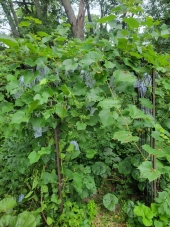

 8
8




Live, love life holistically
 4
4
















 3
3




Clay McGowen wrote:I’m going to go with - yes!
This year we had one cold night with a string of warmer days predicted after. I wanted to give my garden another week so I tossed some blankets, towels, and tarps over my more frost sensitive plants.
As you can see below, this wasn’t perfect as the squash leaves which were touching the blanket died, but the main body of the plant was saved!
I also put a big jug of water under the blanket to also help buffer the temps.
I kept this going a few days later when a similar weather pattern rolled in.
Overall, I’d say I got at least a week longer growing season out of it.
I imagine a tipi purpose built for the task would have good results. Especially if you could find some extra mass to tuck inside as well.
 4
4




Ulla Bisgaard wrote:I guess I will have to ask my husband for help with figuring out what size to make, I am horrible at math.












 2
2




Kevin Olson wrote:
Ulla Bisgaard wrote:I guess I will have to ask my husband for help with figuring out what size to make, I am horrible at math.
Lonnie, from the "Far North Bushcraft and Survival" YT channel has several tipi or pyramid style tent construction videos. These are actually hot tents (i.e. tents with a sheet metal stove inside), but the geometry might still work for your purposes. You could use 6mil poly drop cloths, or the heavier weight Dura-Skrim or Visqueen with fiber reinforcement, or woven, bonded green house cover plastic. Something UV-stabilized would probably be best, given your strong sunlight.!

|
It's a tiny ad. At least, that's what she said.
turnkey permaculture paradise for zero monies
https://permies.com/t/267198/turnkey-permaculture-paradise-monies
|

